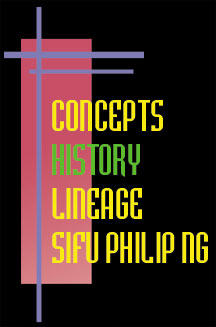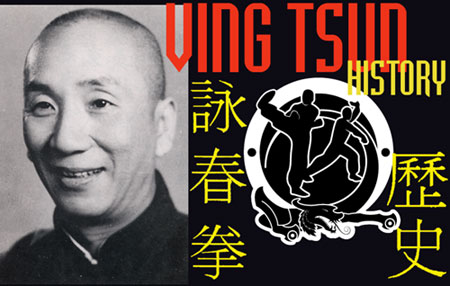

 |  |
| home
| instructors | choy lay
fut | ving tsun | curriculum
| news | gallery | supplies
| links | contact |
| A View Into Ving Tsun’s History - Philip Ng - Not unlike the martial arts of various other lineages and cultures, much of Ving Tsun’s (or Wing Chun’s) early history is shrouded by more myth than is documented by proven fact. Due to the inconsistencies of the stories told of Ving Tsun’s origins by practitioners of different lineages, debates and confusion often arise to cloud the more important technical and conceptual aspects of this fighting method. As the methods and contents of today’s Ving Tsun must have evolved and changed from its original state, it is more important to focus upon why Ving Tsun works and how to put its principles to work for today’s practitioners. Even as we embark to discuss Ving Tsun's historical origins, it is important to keep in mind that no matter how the Ving Tsun method came to be, the method as it exists today is by far more important to the practitioner than the Ving Tsun that had existed in the centuries pasted. With the almost sudden popularity of Ving Tsun in the 1900s, better documentation of Ving Tsun’s progress was achieved. Many stories are told in regards to the origins of the Ving Tsun method, but this essay will begin by addressing the origin as allegedly described by Yip Man himself[1]. During the Qing dynasty, the Shaolin temple offered refuge to many anti-government revolutionaries. In retaliation, the Qing troops raided the temple and burned it down. From this incident fled five survivors. Each would later be credited as an ancestor to one or more forms of various modern Chinese martial arts. Of these survivors, a nun named Ng Mui would become an important figure in the Ving Tsun mythology. Ng Mui, while on the run from the Qing troops, would meet a young woman by the name of Yim Wing Chun. According to legend, Yim Wing Chun was a beautiful daughter of a local tofu vender who was harassed daily by a local bully and his gang. While fighting away these bullies herself would reveal her identity to the Qing troops, Ng Mui decided to teach the young Yim Wing Chun to defend herself. As the story goes, Yim Wing Chun took the skills passed on to her by the nun, Ng Mui, and defeated the bullies. Yim Wing Chun was bothered no more. Yim Wing Chun would later be married to Leung Bok Chao, whom she would pass her fighting skills to. Her husband would later name this fighting method after his wife, Wing Chun (or Ving Tsun). Leung Bok Chao passed on his art to members of a traveling opera company (known as the “Red Boat” opera troupe). Many historians now believe that these traveling performers were in reality anti-Qing revolutionaries who used the opera as a cover up while they secretly spread their anti-government propaganda. These historians have also concluded that the story of Yim Wing Chun was actually a fabrication used by the revolutionaries to hide the fact that Ving Tsun (or Wing Chun) was created in the secret facilities within the Shaolin temple to fight the Qing. Whatever the case, the story continues with "Red Boat" opera troupe member, Leung Lan Kwai, learning martial arts directly from Yim Wing Chun’s husband. Leung Lan Kwai passed the Ving Tsun method to fellow opera mates, Leung Yee Tai and Wong Wah Bo. Leung Yee Tai befriended a supposed cook on the opera boat named Jee Shim. In reality, Jee Shim was a former abbot of the Shaolin Temple in hiding. Jee Shim decided to impart Leung Yee Tai with the now famous, six-and-a-half point pole techniques, which was subsequently incorporated into the Ving Tsun system. Both Leung Yee Tai and Wong Wah Bo would later become the teacher of the legendary Leung Jan. Leung Jan was a famous local herbalist and was known both as a doctor and as a martial arts expert. Famous for his reputation as a winner of numerous challenge matches, Leung Jan received numerous students in his clinic (which served as a herbal store as well as a martial arts school). Among his students were his sons, Leung Chun and Leung Bik, and a disciple named Chan Wah Shun. Chan Wah Shun, or “Money Changer Wah” as he was known (due to his job as a currency exchanger) would later become the teacher of Grandmaster Yip Man. Yip Man, born in the mid-1800s, began his tutelage of the martial arts as a teenager when he became the last student of Chan Wah Shun. When Chan Wah Shun passed away a short time later, Yip Man continued his martial arts education under the guidance of his teacher’s senior disciples. A popular story related that while Yip Man was in Hong Kong during the early 1900s for schooling, he was introduced to man who was reportedly a master of the martial arts. Being young and brash, Yip Man challenged and lost to this older gentleman. Yip man later found out that this man was in fact Leung Bik, the son of his grandmaster, Leung Jan. For the next several years Yip Man improved his own Ving Tsun skills under Leung Bik’s guidance before moving back to his hometown. Due to the Communist Party takeover in 1949, Yip lost his wealth and status. He was forced to relocate to Hong Kong. Without his family fortune, Yip Man luckily found shelter at the Restaurant Workers Association of Kowloon and began teaching Ving Tsun to its members. His first student was a man named Leung Sheung. Leung Sheung was teaching another style of martial arts at the time, but after being defeated by Yip Man in a challenge match, Leung Sheung immediately became his student. In a short time, Yip Man’s classes grew to attract members from outside of the association. Yip Man went on to teach thousands of students, among which included the famous Bruce Lee. Ving Tsun owed much of its fame to several of Yip Man’s senior disciples who, through winning numerous challenge matches, won Ving Tsun the reputation as a definitive fighting method. The most famous and respected of the Ving Tsun fighters was a young man named Wong Shun Leung. Having fought victoriously in (some say) hundreds of challenge fights, Wong Shun Leung would later be dubbed by the Hong Kong press as “Gong Sau Wong”, or the “King of Talking Hands”. The character for Sifu Wong’s surname in Chinese is synonymous with the character for king, and “talking hands” was what people used to delicately describe a no-holds-barred challenge match. Wong Shun Leung began his studies of the martial sciences with western boxing and Tai Chi. Having seen and heard of Ving Tsun fighting prowess, Wong decided to “visit” Yip Man’s academy. During the time was the Chinese New Year and many of Yip Man’s more capable students were not present. After defeating several of Yip Man’s students in attendance, Yip Man decided to take Wong on himself. After being soundly defeated by Yip Man, Wong Shun Leung began his tutelage under the grandmaster. According to Sifu Wong Shun Leung himself[2], Yip Man intercepted all of his attacks and backed him into a corner using only interceptions and good positioning, which impressed Wong quite a bit. So seemingly not offended, Sigung Yip Man instructed the young Wong Shun Leung to begin training at his school after the new year. Sifu Wong (while acting as an assistant instructor) continued his study of Ving Tsun with Sigung Yip Man until Yip Man’s passing in 1972. Sifu Wong would go on and spread the fighting methods of Ving Tsun to literally thousands of people all over the globe until his own untimely passing on January 28, 1997. Ving Tsun’s history continues through the numerous descendents of Grandmaster Yip Man as well masters from other lineages. More importantly, the methods of Ving Tsun will continue to evolve and grow into the future. While it is important to remember and give respect to those who have came before you, one must honor the memories of those who have passed by focusing on the arts and sciences that they have offered us. Like western boxing, Ving Tsun itself must have gone through numerous changes and evolutions to become what it is today. And true Ving Tsun today is simply a method of combat that focuses on simplicity, directness, and efficiency. To focus on the squabbles of Ving Tsun’s mystical origins would take away from your focus on understanding why Ving Tsun works, and how to make it work for you. [1] It should be noted that some have debated on whether or not Yip Man had actually told this story. Some have claimed that others had fabricated the story after his death. I myself was not present during either the birth of the Ving Tsun method or during Grandmaster Yip Man's alleged telling of this story so I honestly cannot attest to the truth or untruth of the Yim Wing Chun mythology. [2] I was actually present when Sifu Wong Shun Leung told me this story, so I can attest to what I have written. |
| © 2001 Philip Ng and Sam Ng. All rights reserved. |
| Website maintained by Studio Straightblast5 |